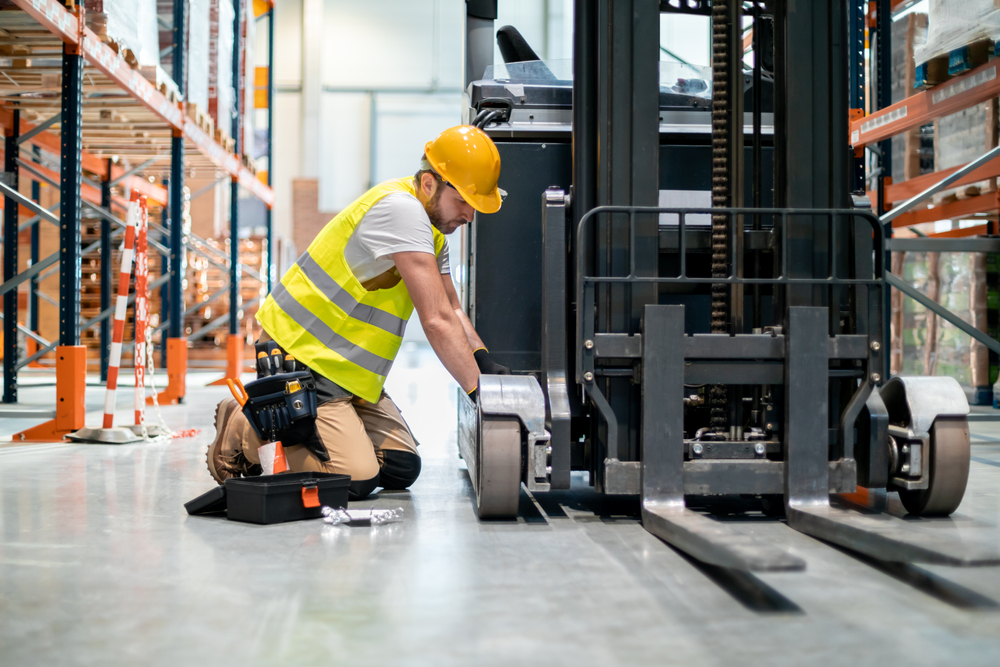The National Institute for Occupational Safety and Health (NIOSH) recently released a pair of Fatality Assessment and Control Evaluation (FACE) reports. One report examines the death of a forklift operator crushed by a pallet full of soft drink cans, and the other details a fatal fall from a boom lift while tree trimming.
Warehouse incident
A 47-year-old forklift operator in Oregon was crushed by a loaded pallet of soft drink cans weighing approximately 2,000 pounds. The warehouse’s inventory management system directed the operator to pull pallets from a row that didn’t contain any product. The operator pulled 4 pallets from the back of the adjoining row, destabilizing the top layer of pallets—the pallet rows were oriented back to back.
While cleaning up cases that fell off one of the pulled pallets, the top layer pallet fell onto the operator from a height of approximately 20 feet, causing massive internal injuries.
The forklift operator worked approximately 70 hours a week, working the swing shift full time at the warehouse, as well as another job that started at 6 a.m.
The Oregon state FACE Program identified 3 contributing factors in the incident:
- Fatigue due to lack of sleep may have adversely affected the employee’s judgment.
- Back-to-back pallet row orientation without physical barriers or visual cues makes it difficult to distinguish where one pallet row ends and the other begins.
- Pallet retrieval procedures were not followed while working under and/or adjacent to a live load.
Recommendations in the report included:
- Ensuring warehouse layout and pallet-stacking procedures incorporate adequate engineering controls to prevent distracted employees from inadvertently destabilizing multilayer pallet rows;
- Ensuring that pallet-stacking procedures meet engineering guidelines for the material stored, are written and accessible to employees, and include instructions on how to perform spot-checks on pallet rows to ensure they are stable and safe from falling or collapsing;
- Ensuring employees are adequately trained to recognize the hazards of working around potentially unstable pallets, including awareness of potential pallet collapse areas, especially while working on or below a live load, as well as ensuring employees follow these procedures, through periodic inspections and reminders, and providing retraining if an accident occurs; and
- Treating sleep deprivation as a workplace hazard, especially for swing and night shift employees.
Fall from boom lift
A 55-year-old operator in Washington state died after he fell from the basket of a boom lift while trying to pull cut tree branches into the basket. The operator was part of a 3-person crew removing trees from a residence. The operator and a coworker were working in an elevated boom lift to remove tree limbs with chain saws.
They decided to bring the cut branches into the basket to prevent them from damaging a garage and shed. To get the branches into the basket, the operator opened the side access gate of the basket. As he leaned forward through the gate, he fell from the basket to the roof of the shed 12 feet below.
Key contributing factors identified by the Washington state FACE Program in the incident include:
- Not wearing personal fall protection.
- Working in a boom lift basket with the access gate open.
- Overreaching to cut and pull branches into the basket.
- Crowding and trip hazards, possibly caused by tree branches in the basket.
- No accident prevention program. Washington has an accident prevention program standard.
- No job hazard analysis.
The investigators’ recommendations include:
- Training workers on how to safely operate and work in boom lifts;
- Ensuring that workers always wear personal fall protection when they are exposed to fall hazards while working in boom lifts;
- Developing an accident prevention program that describes the hazards associated with tree trimming and tree removal and how to control them; and
- Conducting a job hazard analysis before starting a new job to identify the hazards associated with each step and how they will control them.
The federal Occupational Safety and Health Administration (OSHA) is developing a federal tree care standard. The agency plans to release a notice of proposed rulemaking in June. OSHA last fall launched a Regional Emphasis Program (REP) for tree care and landscaping operations in Region 1—Connecticut, Maine, Massachusetts, New Hampshire, Rhode Island, and Vermont.

